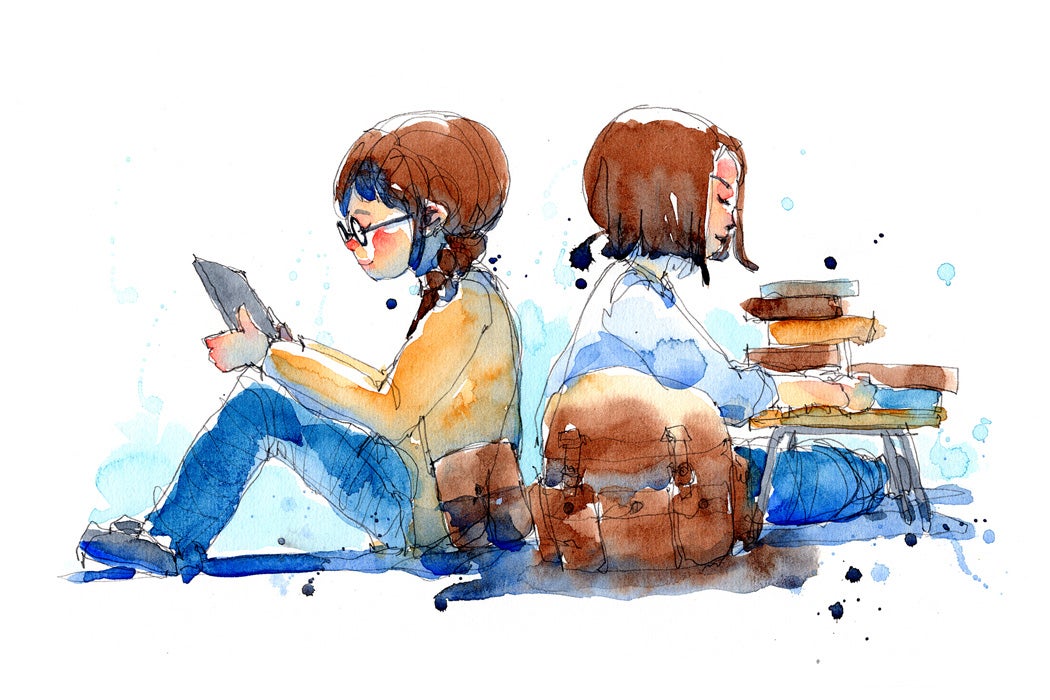For as long as there have been high school English classes, students have grudgingly written book reports, five-paragraph essays, and oral presentations. Today, however, a sizable portion of kids dedicate their after-school time to a different kind of communication activity. As education scholars Michele Knobel and Colin Lankshear write, these “new literacies” include writing fan fiction, blogging and microblogging, curating photos, creating memes, and modding video games—just to name a few examples.
Many teachers recognize the value of these enthusiastic creative efforts even as they bemoan teenagers’ frequent use of casual and nonstandard English online. To meet students where they are, Knobel and Lankshear suggest starting by understanding how new literacies differ from standard English classwork.
Where traditional classroom assignments are often solitary activities, online writing and creative work tends to be collaborative. Knobel and Lankshear note that writing on social media sites and other online spaces often “involves deep interactivity, openness to feedback, sharing of resources and expertise, and a will to collaborate and provide support.” Online spaces also thrive on diversity, with each participant bringing particular knowledge and skills to share with others.
The criteria for “good” online writing are also often quite different from the ones teachers have typically used to judge student work. Rather than writing for a generic imagined audience, teenagers who share work online often have a clear, specific idea of who they’re writing for and what the audience already knows about a topic. And, rather than catering to a single “expert” judge of writing quality (the teacher or test grader), online writers know that their work will be judged by people with varied ideas about what they’re looking for in a piece of writing.
Get Our Newsletter
So, how can teachers engage these highly internet-literate teens? Knobel and Lankshear suggest that teachers participate in online communities themselves, getting a feel for the ethos of the kinds of creative spaces their students inhabit. They also recommend rethinking assessment practices. Rather than focusing on final exam results, they suggest frequent, ongoing feedback that mirrors the kinds of response students might receive as they learn a video game or post fan fiction and read comments.
Ultimately, Knobel and Lankshear write, adapting classroom practices to new literacies isn’t simply about catering to students’ interests. It’s also about recognizing that online culture is changing the adult world that students will be entering. Some of the skills teens learn from inhabiting online creative spaces may be just as important to their futures as the ones they get from a traditional English curriculum.







